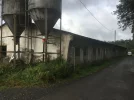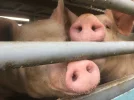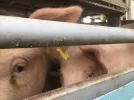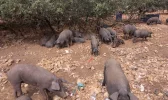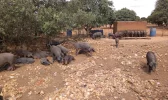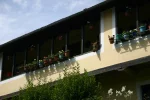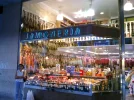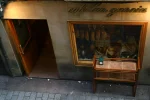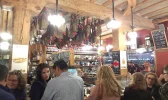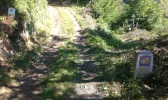The ibérico de bellota (100% Ibérico pigs that eat acorns during montanera season, Oct-Mar) are only raised in the following Denominations of Origin: Guijuelo, Extremadura, Jabugo/Huelva, and Valle de los Pedroches (Córdoba) ...none of which are along the Camino Francés.
This particular type of jamón Ibérico, with a black seal ...(100% ibérico de bellota) only accounts for 0.5% of all jamón production in Spain. Yes, 1/2 of a percent... which results in 370,000 to 400,000 legs (from ~200,000 pigs, depending on the year’s yield and how many acorns are available) per year.
For comparison, annual US production is ~115 million. China is 446+ million.
All the rest of the “jamón ibérico” in Spain is crossed with Duroc pigs for volume production (because they produce litters 2x the size), and SHOULD carry the other seals, which are white, green, or red.
That said, all of the “jamón ibérico” production only accounts for 7% of Spain’s jamón... the other 93% is all Serrano or jamón curado (cured ham), which is for the most part “intensivo”/factory farmed.
So, when people think that the real deal / 100% ibérico is expensive.... well, that’s because it is very expensive to produce. Between the land required, the labor... and not to mention that it takes at least 4 years for a black label jamón ibérico de bellota to be produced, from raising the pig to fully curing the jamón.
The Dehesa is limited, and therefore so is production. If you do eat meat, and eat jamón— the best thing to do is to support those farmers/producers that are not factory farming, and are committed to producing a traditional, artisanal, 100% ibérico.








